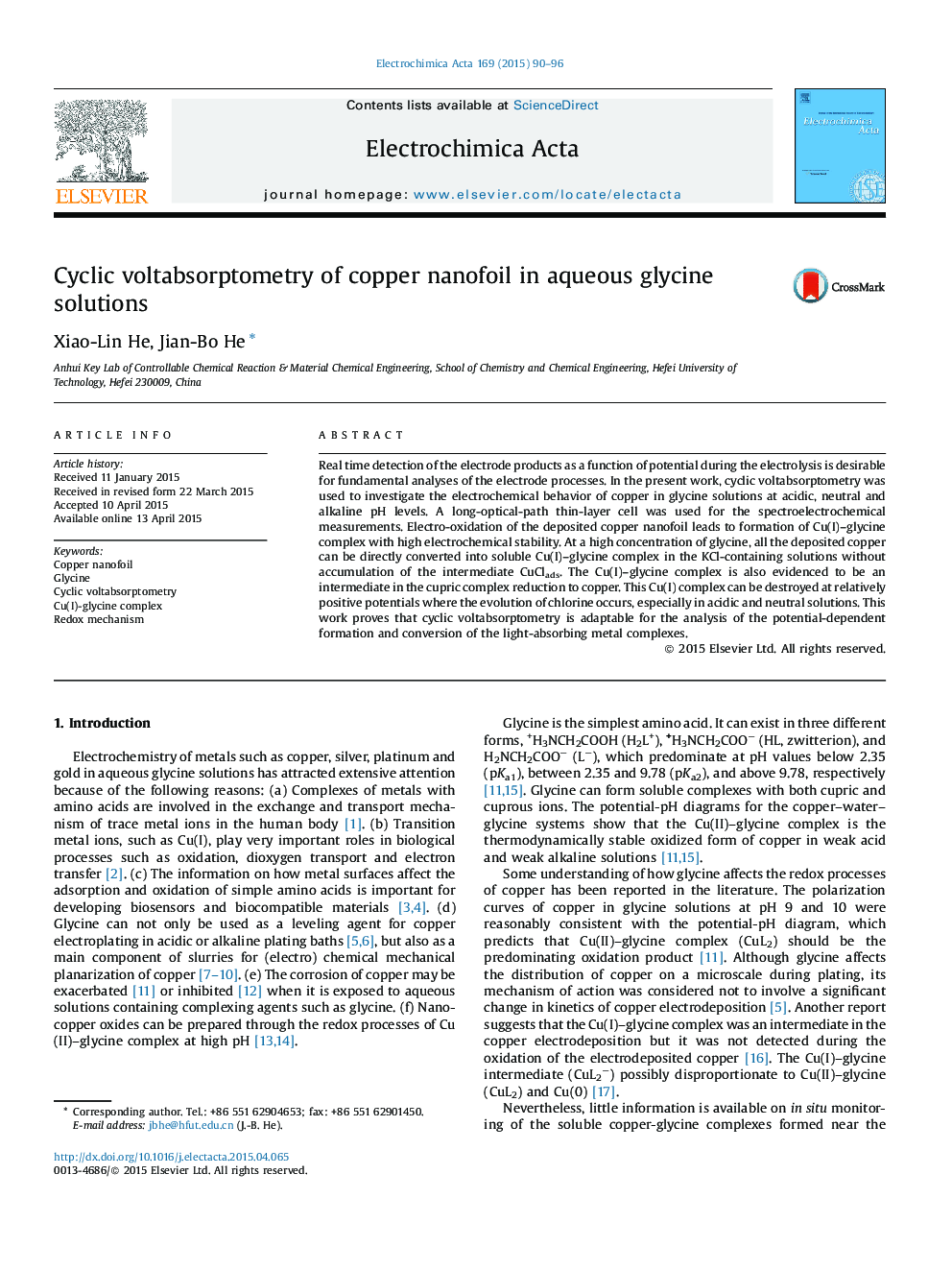| Article ID | Journal | Published Year | Pages | File Type |
|---|---|---|---|---|
| 184098 | Electrochimica Acta | 2015 | 7 Pages |
•Cyclic voltabsorptometry peaks assigned to redox of Cu–glycine complexes.•Nanofoil electrode adaptable for use in cyclic voltabsorptometry of metals.•High electrochemical stability of Cu(I)–glycine complex.•Difficult formation of Cu(II)–glycine complex due to kinetic hindrance.
Real time detection of the electrode products as a function of potential during the electrolysis is desirable for fundamental analyses of the electrode processes. In the present work, cyclic voltabsorptometry was used to investigate the electrochemical behavior of copper in glycine solutions at acidic, neutral and alkaline pH levels. A long-optical-path thin-layer cell was used for the spectroelectrochemical measurements. Electro-oxidation of the deposited copper nanofoil leads to formation of Cu(I)–glycine complex with high electrochemical stability. At a high concentration of glycine, all the deposited copper can be directly converted into soluble Cu(I)–glycine complex in the KCl-containing solutions without accumulation of the intermediate CuClads. The Cu(I)–glycine complex is also evidenced to be an intermediate in the cupric complex reduction to copper. This Cu(I) complex can be destroyed at relatively positive potentials where the evolution of chlorine occurs, especially in acidic and neutral solutions. This work proves that cyclic voltabsorptometry is adaptable for the analysis of the potential-dependent formation and conversion of the light-absorbing metal complexes.
